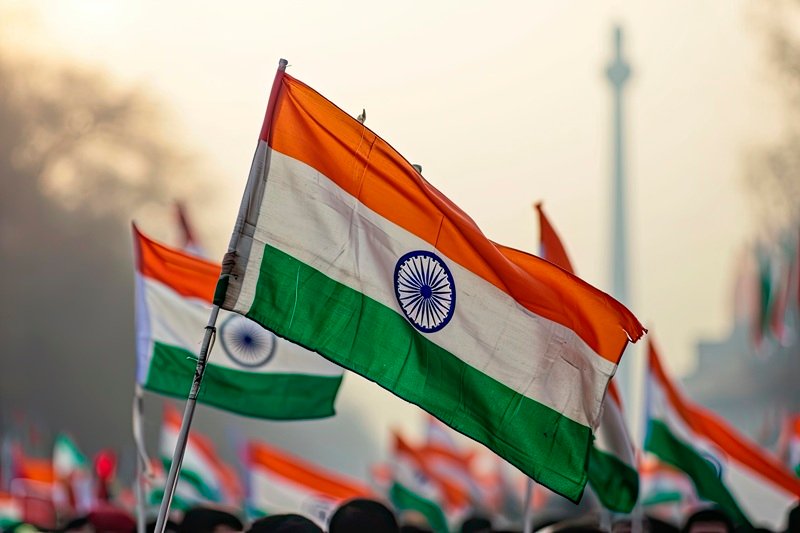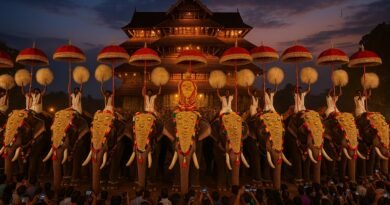
The Prime Minister of India: Role, Functions, and a Complete List of All Prime Ministers
The Prime Minister of India is the head of government and the most powerful figure in the country’s political system. As the leader of the executive branch, the Prime Minister holds immense authority in shaping the nation’s policies, guiding the government, and representing India on the global stage. The position of Prime Minister is central to India’s parliamentary democracy, and the officeholder plays a crucial role in the day-to-day functioning of the government.
This article delves into the role, functions, and powers of the Prime Minister of India, as well as providing a comprehensive list of all individuals who have served as Prime Minister, including their terms in office and significant contributions.
The Role and Powers of the Prime Minister of India
The office of the Prime Minister is not explicitly mentioned in the Constitution of India. However, the Constitution provides a framework that implicitly defines the role and powers of the Prime Minister, particularly under Articles 74 and 75.
Article 74: Council of Ministers to aid and advise the President
According to Article 74, the Prime Minister is the head of the Council of Ministers, which aids and advises the President in the exercise of their functions. The President of India acts according to the advice given by the Council of Ministers headed by the Prime Minister. This makes the Prime Minister the central figure in the Indian government, as they guide the entire executive apparatus.
Article 75: Appointment of Prime Minister and Council of Ministers
Article 75 mandates that the Prime Minister shall be appointed by the President of India. The President is required to appoint the leader of the majority party in the Lok Sabha (the lower house of Parliament) or a person who can command a majority in the House. The Prime Minister is the leader of the ruling party and plays an essential role in forming the Cabinet, deciding on key policies, and representing the nation both domestically and internationally.
Functions and Responsibilities of the Prime Minister
The Prime Minister’s role is extensive and influential in the functioning of the government. Some of the key functions of the Prime Minister are as follows:
- Head of the Government: As the head of the executive branch, the Prime Minister oversees the functioning of the Council of Ministers and ensures that the government’s policies are implemented. The Prime Minister plays a key role in setting the legislative agenda and shaping the government’s decisions.
- Adviser to the President: The Prime Minister acts as the chief advisor to the President of India. All decisions taken by the President are based on the advice of the Prime Minister and the Cabinet.
- Leader of the Lok Sabha: The Prime Minister is typically the leader of the majority party in the Lok Sabha. They represent the government in the House, respond to debates, and ensure the smooth functioning of parliamentary business.
- Formulation and Implementation of Policies: The Prime Minister has a significant role in shaping the policies of the government, from economic strategies to foreign relations. They often play a major role in steering critical decisions regarding national security, foreign policy, and defense.
- Crisis Management: In times of national or international crises, the Prime Minister is the key decision-maker. Whether it’s a natural disaster, military conflict, or a political crisis, the Prime Minister takes the lead in managing the situation and guiding the government through difficult times.
- International Relations: The Prime Minister represents India in international forums, forging diplomatic relations, and establishing India’s foreign policy. They hold meetings with foreign leaders, sign agreements, and promote India’s interests abroad.
- Appointments: The Prime Minister recommends appointments to key constitutional positions, including the President, the Vice President, judges of the Supreme Court, and governors of states.
- Cabinet Formation: The Prime Minister is responsible for forming the Cabinet, which consists of ministers from the ruling party. The Prime Minister appoints ministers, decides their portfolios, and coordinates the Cabinet’s decisions.
Qualifications and Eligibility for the Prime Minister’s Office
While the position of Prime Minister is not explicitly outlined in the Constitution, the qualifications for the office are largely inferred from the qualifications required for the Lok Sabha (House of the People). To be eligible for the post of Prime Minister, a person must:
- Be a citizen of India.
- Be at least 25 years old (for the Lok Sabha).
- Not be disqualified from being a Member of Parliament (MP).
Since the Prime Minister must command the confidence of the Lok Sabha, the person must typically be the leader of the party or coalition that has the majority in the House.
A Complete List of All Prime Ministers of India
Since India’s independence in 1947, the country has had several Prime Ministers. Here is a list of all the individuals who have held the office, along with their terms and key events during their tenure:
1. Jawaharlal Nehru (1947–1964)
- Term: August 15, 1947 – May 27, 1964 (17 years)
- Party: Indian National Congress
- Key Events:
- India’s first Prime Minister and a key architect of India’s independence.
- Oversaw the transition from a British colony to an independent republic.
- Promoted the policy of non-alignment during the Cold War.
- Led India through major milestones, including the first general elections in 1951-1952.
- Guided India in the aftermath of Partition and the Kashmir conflict.
2. Gulzarilal Nanda (1964–1966)
- Term: May 27, 1964 – June 9, 1964 (Acting PM)
- Party: Indian National Congress
- Key Events:
- Served as the acting Prime Minister after Nehru’s death.
- His tenure was very short, and he did not make significant changes in policy.
3. Lal Bahadur Shastri (1964–1966)
- Term: June 9, 1964 – January 11, 1966 (1 year and 7 months)
- Party: Indian National Congress
- Key Events:
- Led the country during the 1965 India-Pakistan war.
- Known for promoting the slogan “Jai Jawan Jai Kisan” (Hail the soldier, Hail the farmer).
- Passed away suddenly in Tashkent after signing the Tashkent Agreement with Pakistan.
4. Gulzarilal Nanda (1966)
- Term: January 11, 1966 – January 24, 1966 (Acting PM)
- Key Events:
- Served as the acting Prime Minister again after Shastri’s sudden death.
5. Indira Gandhi (1966–1977)
- Term: January 24, 1966 – March 24, 1977 (11 years)
- Party: Indian National Congress
- Key Events:
- First woman Prime Minister of India.
- Led India to victory in the 1971 India-Pakistan war, resulting in the creation of Bangladesh.
- Imposed the Emergency in 1975, suspending elections and curbing civil liberties.
- Instrumental in shaping India’s modern economic and industrial landscape.
6. Morarji Desai (1977–1979)
- Term: March 24, 1977 – July 28, 1979 (2 years and 4 months)
- Party: Janata Party
- Key Events:
- First Prime Minister who was not from the Indian National Congress.
- Known for his stance on anti-corruption and social reforms.
7. Charan Singh (1979–1980)
- Term: July 28, 1979 – January 14, 1980 (7 months)
- Party: Janata Party (Secular)
- Key Events:
- Served as Prime Minister for a brief period after Morarji Desai’s resignation.
- His government was marked by instability and a lack of majority support in Parliament.
8. Indira Gandhi (1980–1984)
- Term: January 14, 1980 – October 31, 1984 (4 years)
- Party: Indian National Congress
- Key Events:
- Returned to power after a landslide victory.
- Managed the Indian economy’s recovery and played a key role in international diplomacy.
- Assassinated in 1984 by her own bodyguards, leading to widespread violence.
9. Rajiv Gandhi (1984–1989)
- Term: October 31, 1984 – December 2, 1989 (5 years)
- Party: Indian National Congress
- Key Events:
- Became the youngest-ever Prime Minister of India at the age of 40.
- Promoted technological advancements and economic reforms.
- Was involved in the Bofors scandal, which led to a decline in his political support.
10. Vishwanath Pratap Singh (1989–1990)
- Term: December 2, 1989 – November 10, 1990 (1 year)
- Party: Janata Dal
- Key Events:
- Known for his decision to implement the Mandal Commission report, which recommended reservations for OBCs in government jobs and educational institutions.
11. Chandra Shekhar (1990–1991)
- Term: November 10, 1990 – June 21, 1991 (8 months)
- Party: Janata Dal (Secular)
- Key Events:
- His tenure was marked by political instability, and he faced challenges in managing the government due to a lack of majority support.
12. P. V. Narasimha Rao (1991–1996)
- Term: June 21, 1991 – May 16, 1996 (5 years)
- Party: Indian National Congress
- Key Events:
- Known for his economic liberalization reforms that transformed India into a market-driven economy.
- Played a major role in strengthening India’s foreign relations.
13. Atal Bihari Vajpayee (1996, 1998–2004)
- Term: May 16, 1996 – June 1, 1996 (13 days), March 19, 1998 – May 22, 2004 (6 years)
- Party: Bharatiya Janata Party (BJP)
- Key Events:
- First non-Congress Prime Minister to complete a full term in office.
- Led India to nuclear tests in 1998.
- Strengthened India’s global position and focused on economic development.
14. H. D. Deve Gowda (1996–1997)
- Term: June 1, 1996 – April 21, 1997 (1 year)
- Party: Janata Dal
- Key Events:
- Focused on rural development and public welfare programs.
15. I. K. Gujral (1997–1998)
- Term: April 21, 1997 – March 19, 1998 (1 year)
- Party: Janata Dal
- Key Events:
- Known for the “Gujral Doctrine” in foreign policy, which emphasized improving relations with India’s neighbors.
16. Manmohan Singh (2004–2014)
- Term: May 22, 2004 – May 26, 2014 (10 years)
- Party: Indian National Congress
- Key Events:
- Played a key role in economic reforms, liberalizing India’s economy further.
- Oversaw the UPA coalition government.
17. Narendra Modi (2014–Present)
- Term: May 26, 2014 – Present (2 terms as of January 2025)
- Party: Bharatiya Janata Party (BJP)
- Key Events:
- Known for his major initiatives like Make in India, Digital India, and Swachh Bharat Abhiyan.
- Played a crucial role in shaping India’s foreign policy and strengthening India’s global standing.
Conclusion
The office of the Prime Minister of India holds immense significance in the country’s political structure, and each Prime Minister has contributed uniquely to shaping India’s growth and development. From Jawaharlal Nehru’s vision of a secular and socialist India to Narendra Modi’s focus on economic reforms and global leadership, each Prime Minister has influenced India’s journey in a distinctive way. Their roles have evolved over time, but their influence on India’s governance remains paramount.






